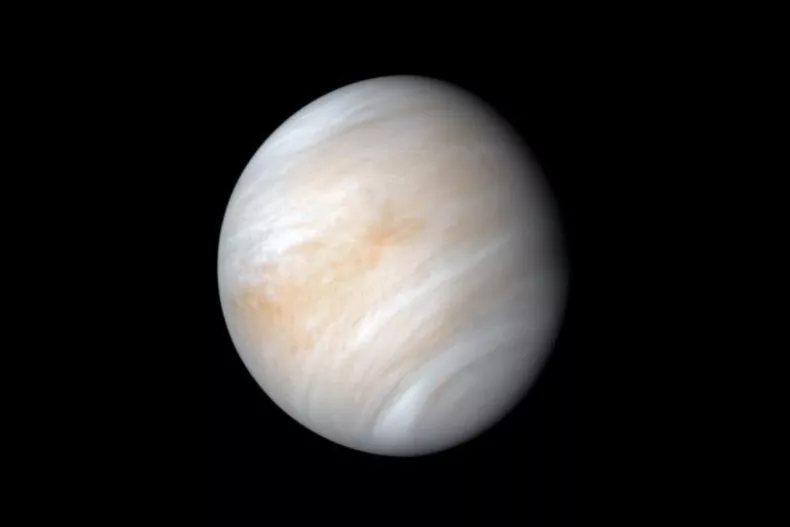Scientists have detected two gases in Venus’s atmosphere that may be the fingerprints of life on our hostile neighbor. Phosphine gas and ammonia gas have been detected in the planet’s thick, hot atmosphere, according to preliminary data. Both gases cannot easily be explained by atmospheric or geological phenomena on Venus, meaning they could be possible biosignatures. Preliminary analysis of new observations with a new receiver on the James Clerk Maxwell Telescope (JCMT) has confirmed the presence of phosphine and are hinting at larger amounts closer to the clouds.
Venus is one of the most extreme and hostile environments in our solar system. Its atmosphere is composed primarily of carbon dioxide, followed by 3.5 percent nitrogen and trace amounts of sulfur dioxide, water vapor, and carbon monoxide. Higher in the atmosphere, there are thick clouds of sulfuric acid. Venus’s surface has an atmospheric pressure about 92 times that of Earth’s at sea level, and its surface temperature is extremely high, averaging around 872 degrees Fahrenheit. This intense heat is due to the greenhouse effect, caused by the dense CO2 atmosphere trapping heat from the sun.
According to the scientists’ preliminary findings, phosphine gas and ammonia gas were detected at “part per billion to part per million levels,” which is an incredibly small amount. On Earth, phosphine gas is only made in significant amounts by bacteria living in low-oxygen environments, meaning that it is often considered a marker of life. They are possible biosignatures since producing these compounds of phosphorous (for phosphine) and nitrogen (for ammonia) in the oxidizing atmosphere of Venus is very difficult for normal, known chemical processes.
Some have theorized that life could survive high up in Venus’s clouds, where the temperature and pressure are more akin to that on Earth. However, no evidence of this hypothetical life has ever been found. For now, the researchers will continue to analyze their early data and investigate how these gases may have appeared on this roiling-hot planet.
